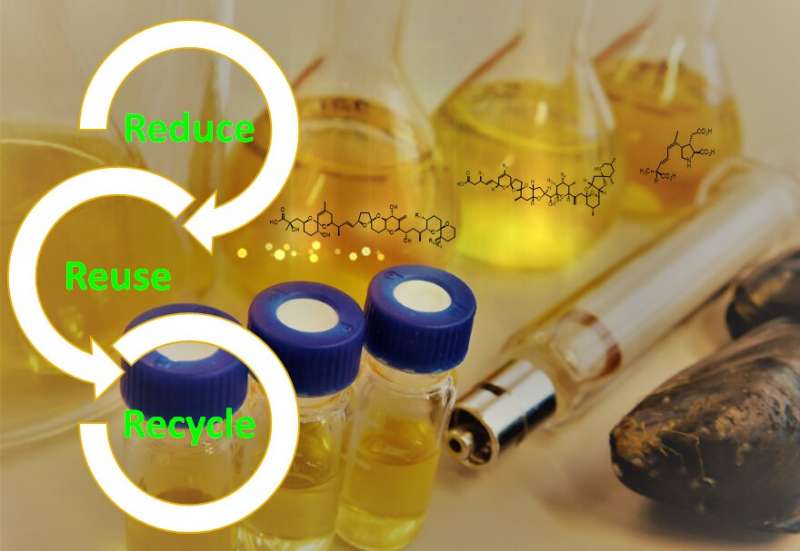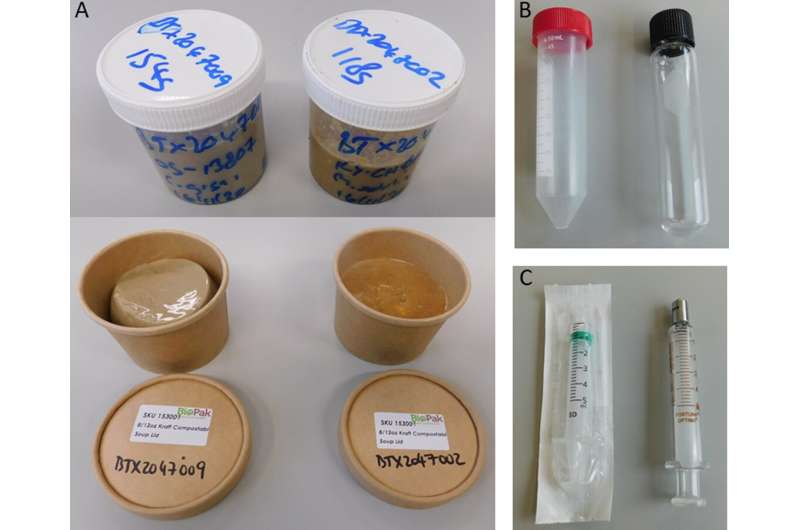How one marine chemistry lab slashed their carbon footprint

Laboratories may consume large quantities of plastics, generate waste, and emit greenhouse gases. A report published in PLOS Sustainability and Transformation by Jane Kilcoyne and her colleagues at the Marine Institute, Galway, Ireland exemplifies how laboratories can significantly reduce their plastics and carbon footprint, and reduce financial costs, by transitioning to more efficient, sustainable laboratory materials and methods.
There are an estimated 20,500 laboratories involved in medical, biological, or agricultural research globally. The Marine Institute's national monitoring program for the detection of biotoxins in shellfish introduced more sustainable practices into the laboratory, with the goal of reducing their plastics, waste to incineration/landfill, and greenhouse gas footprint, without compromising scientific standards.
The laboratory, comprising of a team of seven staff members, was able to significantly reduce its environmental footprint in multiple categories. By applying the reduce, reuse, recycle principle, more than 96 percent of non-chemical waste, including polystyrene and shellfish, was diverted from incineration/landfill, while single-use plastics were reduced by 69 percent. Hazardous chemical waste decreased by about 23 percent, and fume hood and cold storage equipment energy consumption decreased by 30 percent. A transition to digital document management led to an 81 percent reduction in printing. The strategies implemented led to annual cost savings of approximately €15,800. Sustainability efforts are still required, which the team will continue in order to meet the ultimate goal of achieving green lab certification.

The authors add: "Going green in the workplace is a win-win. Introducing more sustainable work practices into our monitoring program led to reduced environmental and financial costs, enhanced efficiencies, and boosted staff engagement."
More information: Kilcoyne J, Bogan Y, Duffy C, Hollowell T (2022) Reducing environmental impacts of marine biotoxin monitoring: A laboratory report. PLOS Sustain Transform 1(3): e0000001. doi.org/10.1371/journal.pstr.0000001
Provided by Public Library of Science




















